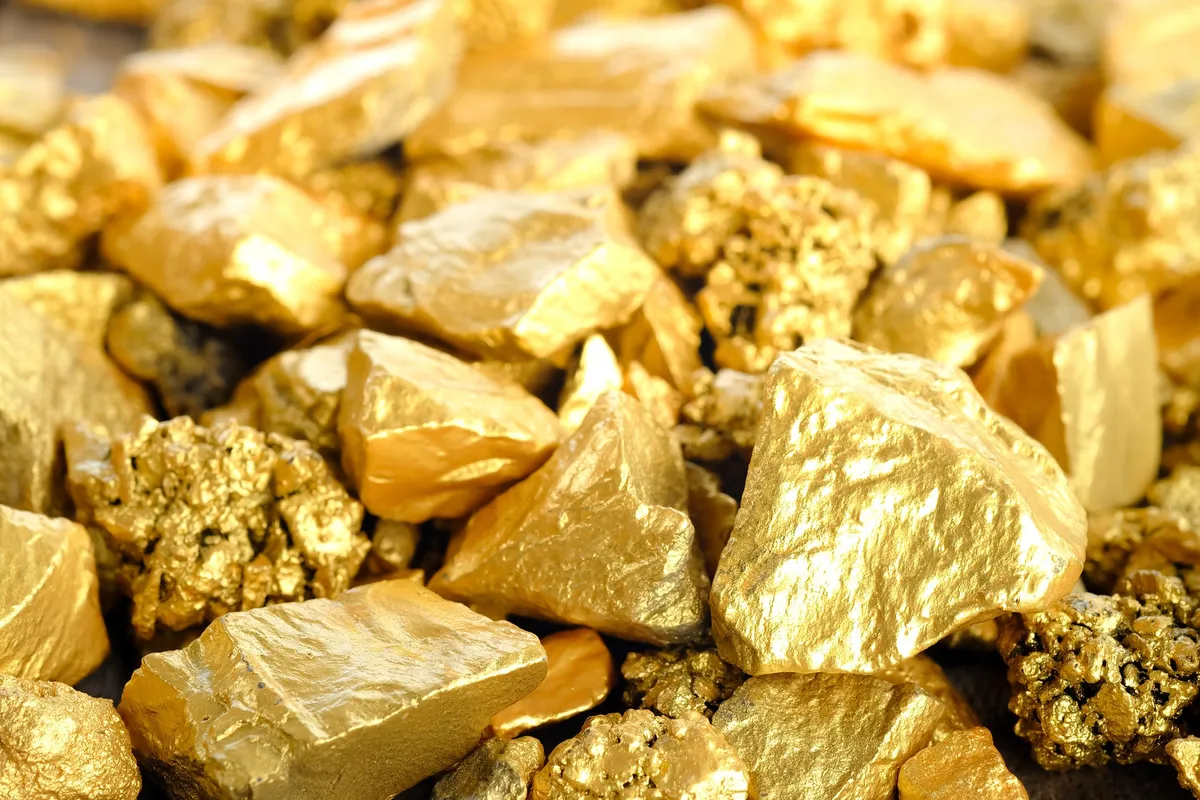
Picture source: Daily Galaxy
Gold has always been an important part of the global economy. Known for its beauty and value, it serves as a safe investment during times of economic or political uncertainty. Beyond its financial importance, gold is used in jewelry, currency, tech, and more. Let’s take a look at the countries with the most gold mine in the world in 2023.
1. Australia
Australia continues to dominate the global gold production scene, churning out an impressive 12,000 tons in 2023. This solidifies its position as the world's top gold producer. Gold contributes over 50% of the country’s exports and accounts for 8% of its GDP. The presence of massive mining operations like Newmont’s Boddington, Newcrest’s Cadia, and Newmont’s Tanami ensures Australia’s continued success in the industry. With vast reserves and efficient operations, Australia has cemented its place as a critical player in the global gold market, influencing everything from local economies to international trade dynamics.
2. Russia
Russia is not far behind, with 11,100 tons produced in 2023. As Europe’s leading gold supplier, Russia has maintained this top position since 2010, largely driven by Siberia’s Olimpiada mine, which alone contributes around 20% of the country’s gold output. However, the geopolitical tensions arising from the ongoing war in Ukraine and resulting economic sanctions have impacted Russia's broader market reach. Despite these challenges, Russia’s status as a major gold producer remains strong, thanks to its substantial domestic reserves and large-scale mining operations.
3. South Africa
South Africa, once the world’s largest gold producer, has seen its output dwindle in recent years, but it remains the top producer in Africa, with 5,000 tons mined in 2023. The East Rand mine, the deepest in the world at 3,585 meters, continues to be a cornerstone of the country’s gold industry. While competition from other African nations has reduced South Africa's global dominance, the country’s historical contributions to gold production and its rich mining heritage ensure that it still plays a key role on the continent.
4. United States of America
The United States produced 3,000 tons of gold in 2023, with notable contributions from states like Nevada and Colorado. Nevada, in particular, is a powerhouse, accounting for 80% of U.S. production in 2021 alone. Gold mining remains a critical part of the U.S. economy, with gold exports worth $9 billion in 2021. The U.S.’s push to increase production, particularly in the western states and Alaska, highlights its continued relevance in the global gold market, ensuring that the country maintains a competitive edge.
5. China
China’s gold production in 2023 matched that of the U.S., reaching 3,000 tons. However, China is facing significant challenges, especially with stricter environmental regulations that have led to the closure of several mines and reduced reserves. Once the world’s largest gold consumer, China is now shifting focus toward more eco-friendly mining practices. Despite these hurdles, China’s efforts to balance sustainability with production could set new industry standards, ensuring that its gold industry remains influential in the years to come.
6. Indonesia
Indonesia, with its 2,600 tons of gold production in 2023, is another major player in the global gold market. The country is home to the Grasberg mine in Papua, one of the world’s largest and most productive gold mines. Mining in Indonesia is not just about gold, though—it's a critical pillar of the national economy. While balancing economic growth with environmental concerns, Indonesia continues to push forward, using its natural resources wisely and sustainably as part of its broader development goals.
7. Brazil
Brazil, with 2,400 tons produced in 2023, continues to play a significant role in gold mining, particularly in the Amazon and Pará regions. Gold mining in Brazil dates back to colonial times, making it a key part of the nation’s history. However, modern challenges such as illegal mining, deforestation, and environmental damage in the Amazon are reshaping the sector. Despite these concerns, Brazil’s deep historical connection to gold and its vast reserves ensure that it remains a critical player in the global gold industry.
Conclusion
As the demand for gold continues to rise, countries around the world are facing unique challenges and opportunities. From the geopolitical hurdles in Russia to the environmental pressures in China, the global gold industry is in flux. Yet, no matter the challenges, gold remains an integral part of the global economy, shaping financial markets, geopolitical relationships, and cultural landscapes across continents. As we look to the future, understanding the forces driving gold production will be key to navigating both the economic and environmental shifts ahead.
In the end, gold’s allure as a precious resource ensures that it will continue to be at the heart of global trade, making its production and the countries involved even more fascinating to track in the years to come.